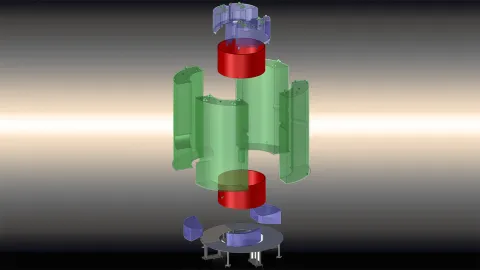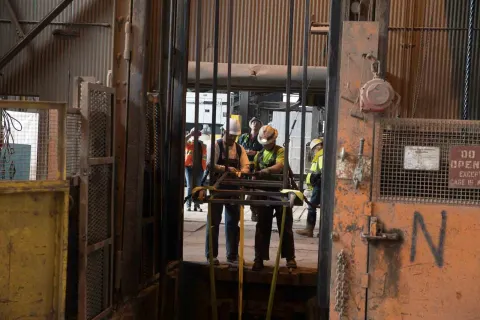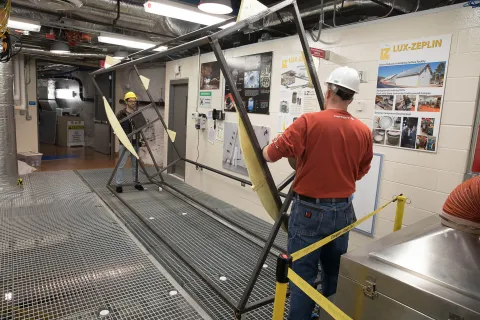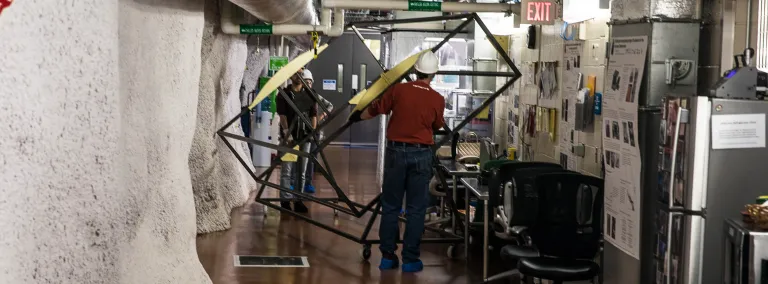LZ acrylic tanks face tight squeeze underground
When designing an experiment that needs to go underground, scientists and engineers face unique logistical challenges.
When designing an experiment that needs to go underground, scientists and engineers face unique logistical challenges. That’s the case with the LUX-ZEPLIN, a second-generation dark matter detector that will replace the Large Underground Xenon experiment (LUX) on the 4850 Level of Sanford Lab.
One upgrade to the design is so large, a transport exercise was devised to ensure the components would fit through the narrow corridor in the Davis Campus. LZ will be surrounded by six acrylic tanks filled with a liquid scintillator, or veto system. Four of the tanks stand 13 feet high and weigh well over a ton each—empty. Each will fit tightly around the sides of the xenon-filled cryostat The other two are circular and will fit tightly against the top and bottom of the cryostat. Getting all six to their destination is a tall order.

“These tanks are such big objects, they won’t fit inside the cage and we can’t guarantee there will be a clear path to the Davis Cavern,” said John Keefner, underground operations engineer. “If we need to make changes, we need to know that now so adjustments can be made to the design.”
The tanks won’t fit inside the cage, so they need to be slung below it. Engineers built a large rotary-style cart that will be used to transport the tanks and maneuver them through tight spots; however, before trying to move the tanks, they needed to do a dry run, which included moving the cart to the Davis Campus.
Keefner called on the expertise of the Yates Shaft crews, including rope technician Rick Tinnell and infrastructure technicians Neil Engle, Casey Schaff, Dick Goetz and Dustin Mund. The team worked together to sling the device below the cage, then slowly transported it to the 4850 Level, watching through a small hole in the bottom of the cage to ensure the device did not hit the shaft walls.

“That part went really well,” Keefner said. “The guys had to do a lot of work upfront and attach the ropes carefully to make sure the device hung correctly below the cage and make sure it didn’t hit the walls of the shaft. The guys did a great job.”
Once on the 4850 Level, the device was wheeled into the Davis Campus with little trouble—unless you count the near-encounters with a low-hanging pipe and the Majorana gowning anteroom.
“We learned two things from this exercise,” Keefner said. “We can get the device in with about an inch to spare. And we need to improve the rotating mechanism.”

